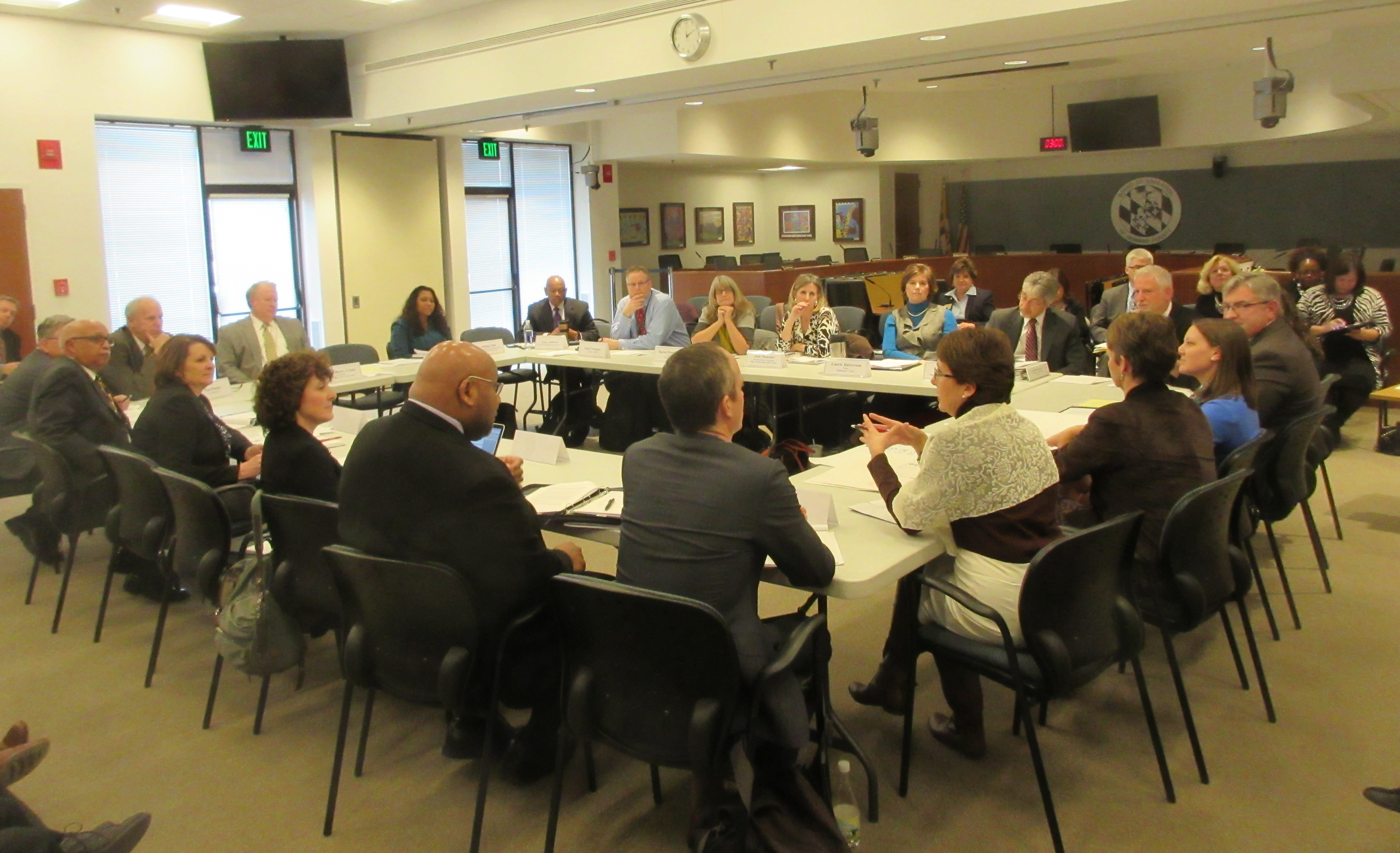By Len Lazarick

School superintendents and teachers testified at Mondays meeting of the Commission to Review Maryland’s Use of Assessments and Testing in Public Schools. The commission was meeting in the board room of the Howard County Board of Education.
Instead of waiting for a state commission to finish studying overtesting in Maryland’s public schools, legislators working with teachers and parents are pushing a standardized testing limit of 2% of annual instructional time.
Organizations representing school superintendents and school boards across Maryland are urging lawmakers to reject the proposal, HB141, and wait for the testing commission’s initial recommendations due July 1.
Del. Eric Luedtke, a former middle school social science teacher in Montgomery County and now a Democrat representing District 14, is lead sponsor of the bill. On Thursday, he told the House Ways and Means Committee on which he serves that the amount of testing required by federal, state and local authorities has crowded out real learning and instructional time.
Losing instructional time
Casey Day-Kells, a 5th grade teacher in Frederick County, reinforced that message.
“Over the last four weeks, I was required to administer a writing test, an individualized reading test for every child, a computer-based reading test, a computer-based math test, and another pencil and paper math test,” Day-Wells told the committee. “Overall, in those last four weeks, this testing has taken over 17 hours of my instructional time,” with no new learning occurring.
Day-Kells chairs the Time to Learn Committee of the Frederick County Teacher’s Association, part of a statewide “Less Testing, More Learning” campaign by the Maryland State Education Association.
Celia Burton, testing coordinator for the Prince George’s County School, testified that “many of our students lost almost 40 days of instructional time.”
Superintendents, boards want to maintain local control
Daniel Curry, Calvert County superintendent of schools representing Maryland’s 24 superintendents, said “it would be premature to make any decision” about testing before the new commission made its first report.
But the superintendents believe that “Local testing should be left in the hands of local jurisdictions,” and he called the 2% figure “arbitrary.”
The Maryland Association of Boards of Education agrees in principle with the superintendents about maintaining local control and waiting for the work of the testing commission.
Commission gets slow start
The testing commission was created by legislation last year signed by Gov. Larry Hogan in May, but the governor’s office was slow in making all the appointments to the 19-member commission, and it did not hold its first meeting till Nov. 17.
There have been three meetings since then, including one on Monday, in which the commissioners heard from the school superintendents, the boards of education, the PTA, and the Baltimore City teachers union.
There is general agreement among most of the groups that there’s too much testing, but how much is actually occurring and what to do about is not clear.
There is also a continuing dispute about the amount of testing reported in a study by the Maryland State Department of Education. MSEA continues to questions the accuracy of the reporting based on different understandings of what tests were actually “mandated” by state and local school authorities.
Commission member Larry Bowers, interim superintendent of Montgomery County Public Schools, raised the problem that Luedtke’s bill and others that have been introduced “take our work away from us.”
Commission Chair Christopher Berry, principal of James Hubert Blake High School in Montgomery County, said the commission had to follow its mission spelled out in the law creating it, and the legislators should do as they saw fit.
He has created four subcommittees to work on recommendations.
OTHER RELATED STORIES




Here’s the math folks! 6 hrs of school for 180 days = 1080 hrs of total time in school. 2% of that is 21.6 hrs. That’s a lot of testing! That’s a lot of LOST instructional time. That’s NOT counting all the “teaching to the test” that takes place due to County Supes. adding in “practice testing”. That’s NOT including the testing that each county mandates per Superintendent. And let’s ask the real big question here…..what do the students/parents get from this testing? Absolutely NOTHING. If you give a student a test and the results ARE NOT received until 6-8 months later (into the next school year), how is that supposed to help instruction of that student? Parents need to wake up and look at what really goes on during the average school day. Not much learning going on….I can tell you that! It’s a shame. It’s called education malpractice committed against every student sitting in a classroom thanks to our Federal Gov’t (USDE). REFUSE THE TESTS!